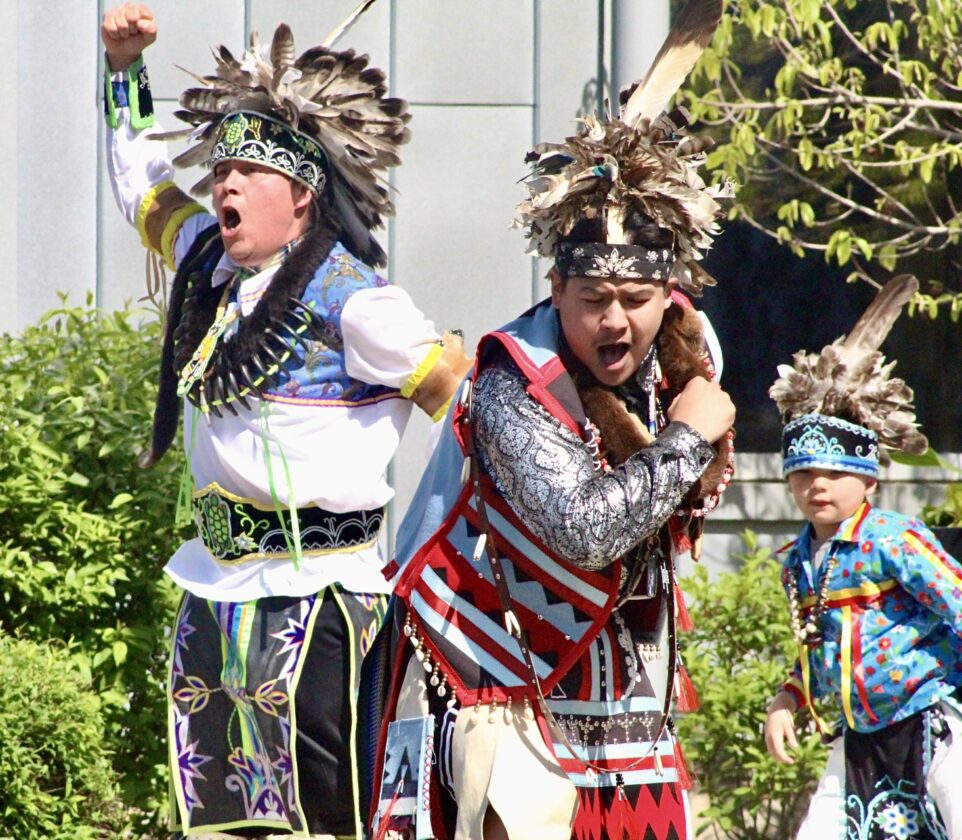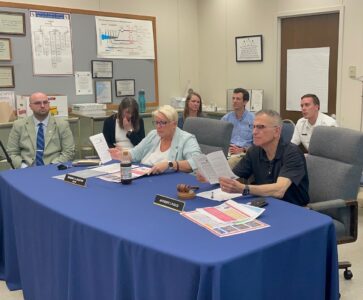‘Long overdue’: Hochul issues apology for boarding school ‘atrocities’

Gov. Kathy Hochul issued an official apology on behalf of the State of New York on Tuesday morning at the William Seneca Building on Seneca Nation land for the “atrocities” committed at the Thomas Indian School. P-J photos by Braden Carmen Governor Kathy Hochul issued an official apology on behalf of the State of New York on Tuesday morning at the William Seneca Building on Seneca Nation land for the “atrocities” committed at the Thomas Indian School.
- Gov. Kathy Hochul issued an official apology on behalf of the State of New York on Tuesday morning at the William Seneca Building on Seneca Nation land for the “atrocities” committed at the Thomas Indian School. P-J photos by Braden Carmen Governor Kathy Hochul issued an official apology on behalf of the State of New York on Tuesday morning at the William Seneca Building on Seneca Nation land for the “atrocities” committed at the Thomas Indian School.
- J. Conrad Seneca, President of the Seneca Nation, spoke to a crowd of hundreds Tuesday morning before introducing Governor Kathy Hochul, who issued an apology on behalf of the State of New York.
- Pictured are participants during an old style Seneca War Dance to honor Indigenous culture on Tuesday morning.
- Hundreds gathered at the William Seneca Building for Governor Kathy Hochul’s visit to the site of the former Thomas Indian School.
But an apology is a start.
Gov. Kathy Hochul issued an official apology on behalf of the State of New York on Tuesday morning at the William Seneca Building on Cattaraugus territory belonging to the Seneca Nation for the “atrocities” committed at the Thomas Indian School, along with other Native American boarding schools across the region.
“I cannot change the horrors of the past. I wish I could,” Hochul said to a crowd of hundreds of guests. “I wish I could wipe it all away. You deserve that.”
Hochul spoke on the 183-year anniversary of the Third Treaty of Buffalo Creek, signed May 20, 1842, which restored native title to the Allegany, Cattaraugus and Oil Springs reservations. Hochul said her visit was planned two months ago following a meeting in Albany with J. Conrad Seneca, President of the Seneca Nation.

J. Conrad Seneca, President of the Seneca Nation, spoke to a crowd of hundreds Tuesday morning before introducing Governor Kathy Hochul, who issued an apology on behalf of the State of New York.
“Today is about the children and the families that had to endure the hardships and mistreatment that occurred here on this piece of land, at this campus, the Thomas Indian School,” said President Seneca. “As we gather today, let’s remember them.”
Seneca stated his belief that the guests in attendance were standing on “sacred ground.” He spoke to the resilience of the Seneca Nation and the values, traditions, and customs his people uphold.
“Our ability to find our way through the many challenges that we face in life, and to be still here today, is a testament to our ancestors to our people of today,” President Seneca said.
Before Hochul spoke to the crowd, the hundreds who gathered to witness her visit were treated to displays of Indigenous culture, including several traditional dances such as the Old Mocassin Dance, the New Women’s Shuffle Dance, an old style Seneca War Dance, and a Smoke Dance.
Meanwhile, inside the William Seneca Building, Hochul spoke with Seneca about the issues his people still face. Hochul credited Seneca, along with many other leaders — past and present — for helping “deepen the relationship that always should have been there” between the Seneca Nation and New York State.

Pictured are participants during an old style Seneca War Dance to honor Indigenous culture on Tuesday morning.
The Thomas Indian School was owned and operated by the state of New York on the Cattaraugus Territory from 1875 until it closed in 1957. Thousands of children from various Native Nations were separated from their families and forced to attend the school, and other residential boarding schools across the United States and Canada. Schools such as the Thomas Indian School stripped Indigenous children of their traditional language and culture. They often suffered abuse, violence, hatred, at the hands of school officials. Many students even lost their lives.
“These atrocities occurred for more than 100 years. They were known by the state of New York,” Hochul stated, acknowledging the state’s involvement with sites such as the Thomas Indian School for more than 75 years.
“Teaching our children today is the first step, making sure they understand what happened,” Hochul said. She vowed to play her part in educating people of New York about the horrors of boarding schools in the past.
Hochul stated, “I’m insisting that we create new educational materials about the Indigenous nations — their histories, their cultures, their contributions – and I want that in our New York K-12 schools so there is a deeper understanding of the people whose land we are on and what they have gone through. That is a first step forward.”
Hochul was introduced to descendants from Thomas Indian School and heard of the “generational trauma” stemming from the school, not only to the students themselves, but also with their own families later in life. She highlighted the harshness of a previous name for the school – the Thomas Asylum for Orphan and Destitute Indian Children – for its lack of compassion.

Hundreds gathered at the William Seneca Building for Governor Kathy Hochul’s visit to the site of the former Thomas Indian School.
“Instead of being a haven for orphaned children, it became a place of nightmares; a place some would call a torture chamber,” Hochul said. She also called the school “a site of sanctioned ethnic cleansing.”
Hochul said, “There was a lack of love. Children in that school were not feeling part of a family. They were so lonely. They didn’t know they had a connection to others on the outside. No one hugged them, no one gave them kisses goodnight. So they, in turn, when they left and became parents themselves, were not conditioned in the nurturing ways of parents that you would expect.”
Hochul commended the courage of those who shared their stories of the school. She recognized that opening the wounds of such great significance was no easy task, and applauded the resilience and care dedicated to stopping the cycle of abuse that many in the community have shown.
“The people have endured, and I admire that strength. It’s inspiring to me,” Hochul said.
Hochul called Tuesday’s visit “long overdue” and stated that “other governors should have preceded me.” She presented President Seneca with an official proclamation recognizing her apology on behalf of the State of New York to commemorate the occasion.
“On behalf of the State of New York, I, Governor Kathy Hochul, apologize to the Seneca Nation of Indians, and survivors and descendants of all nations who attended the Thomas Indian School. I recognize, on behalf of the people of this state, the atrocities that were committed there, and the enduring trauma that has been inflicted upon the Seneca,” Hochul said. “That’s why I recommit to the truth, the justice, the reconciliation, accountability, and healing that must begin today, and forward into the future.”










